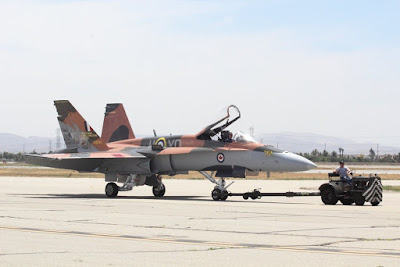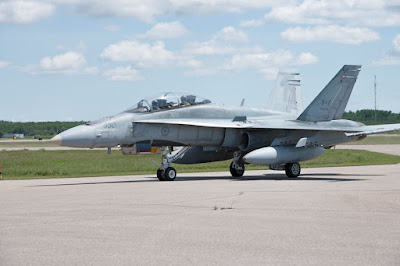While neither the RCAF nor the Royal Canadian Navy operated the Buffalo in service, there are a few Canadian connections to the type.
 |
Two Belgian Buffalos (still carrying their U.S. registrations NX93B and NX90B)
at Dartmouth are being prepared for their sea voyage by 10 (BR) Squadron, RCAF.
(Carl Vincent Collection) |
The RCAF’s introduction to the Buffalo took place in June 1940 when 10 (BR) Squadron, based at Dartmouth, Nova Scotia, took possession of a handful of Buffalos that had been ordered by Belgium. The first six of these aircraft were loaded onto the French aircraft carrier Béarn along with French Curtiss SBC Helldivers and Stinson 105s. When France surrendered, the carrier was diverted to Martinique and the aircraft were left outside to rot. The remaining Buffalos in the care of 10 (BR) were shipped to England onboard HMS Furious after Belgium had fallen to the Germans. These aircraft were taken on strength by the Royal Air Force and the Fleet Air Arm.
 |
Abandoned Buffalos and Helldivers at Fort-de-France, Martinique.
(Carl Vincent Collection) |
While it can be assumed that some Canadian pilots flew the Buffalos while in service with the British, a few stories stand out. Lieutenant Kenneth Lloyd Keith, DSC, of Calgary, was a Fleet Air Arm Swordfish pilot who was seconded by Commander Charles Keighly-Peach to fly Sea Gladiators from HMS Eagle. This small flight provided desperately needed fighter defense for the Mediterranean fleet. Throughout July and August of 1940, Keith defended the fleet successfully with his antiquated Gladiator biplane. By 1941, he was flying Buffalos with 805 Squadron from Dekhelia, Egypt, on convoy escort. Sadly, on June 17, 1941, he was shot down in Buffalo AX813 by a Bf-109E while on a fighter patrol over Royal Navy ships near Sidi Barrani. Keith survived the crash and was taken prisoner, but succumbed to his wounds a week later. Keith is believed to be the first allied, and only Fleet Air Arm, pilot to be shot down in a Buffalo.
 |
| One of 805 Squadron’s Buffalos (AS413) in Egypt. (Tony O’Toole Collection) |
Most of the RAF’s Buffalos were sent to the South East Asia theatre. RCAF pilot Tom Watson had the distinction of flying the last Buffalo out of Singapore on February 11, 1941. The aircraft (W8205 TD-H) had been abandoned on the field and the ground crew were able to get the aircraft running so that Watson could depart with three Hurricanes from his Squadron. Watson recounted in Brian Cull’s “Buffaloes Over Singapore”:
“I had never been in a Buffalo before and had some trouble with the throttle controls, particularly as the pitch was controlled from the dashboard. Also it took me a bit of time to figure out how to raise the wheels. We were an odd looking lot, three Hurricanes and a Buffalo leaving a smoking Singapore behind us. We had no maps and I had no parachute.”
Upon landing at Palembang’s auxiliary airfield P2, Watson was reprimanded by the CO for flying a type in which he had not received a checkout! Watson then became the only RCAF pilot to join a Royal Australian Air Force Squadron in Australia. After his escape from Singapore, he end up flying P-40Es with 77 Squadron, RAAF.
Finally, some Canadian pilots in the RCNVR and Fleet Air Arm flew Buffalos as part of their training with the U.S. Navy. The Navy operated war weary F2A-2 and F2A-3 Buffalos as advanced trainers at NAS Miami. While they were clearly not combat aircraft, the Canadian pilots enjoyed their first crack at a “fighter” type. RCNVR ace Don Sheppard was among these pilots.
The Buffalo in Scale
The Brewster Buffalo is one of those aircraft that is popular with modelers and kit manufacturers in spite of its poor reputation as a combat type. Over the years many kits have been issued in all of the major scales.
In 1/32 scale, Special Hobby and Czech Model have issued various versions of the Buffalo based upon the same kit with short run plastic and various resin and photo etch accessories depending on the boxing.
 |
Tony O’Toole’s 1/48 scale Tamiya Buffalo done up as AX820
of 805 Squadron of the Fleet Air Arm. |
Tamiya has the F2A-2 and RAF Buffalo market cornered in 1/48 scale with a kit first issued in the 1970s, which still holds up well today. Special Hobby and Classic Airframes have also issued Buffalo kits, focusing on the longer F2A-3, the shorter F2A-1, and the Finnish Model 239. Again, these kits are short run plastic supplemented with resin detail parts. Classic Airframes went in to stasis a few years ago, so their kits may be difficult to find.
Legacy kits in 1/72 scale include an F2A-2 by Airfix and a RAF Buffalo by Matchbox. Both are kits of the early 1970s, and out of the two I have a preference for the Matchbox kit. This may be solely due to nostalgia; I built the kit as a young boy and enjoyed the red and white plastic used to mold the two trees.
More recently Hasegawa has issued various boxings of the Finnish Model 239, F2A-1 and F2A-2. These are very nice kits with fine engraved panel lines and excellent fit, but the kits are hard to find and quite expensive. Inexplicably, a RAF Buffalo has never been issued, even though it appears that parts were created to make this version. A resin aftermarket set has been issued by Quickboost to correct this oversight. Recently a dual boxing of an F2A-2 and F2A-3 has been issued which includes resin parts to to convert the second kit to the longer F2A-3 version.

In 2013, Hobby Boss has issued an Easy Assembly kit marked as an F2A Buffalo. It appears that Hobby Boss intended it to be a F2A-1 Buffalo and the kit includes decals for two early U.S. Navy Buffalos, including one in a spectacular “Barclay” camouflage. However, it really is a mix of F2A-1 features, the cowling, and F2A-2 parts, the large spinner. The kit has its fuselage and wings molded in one piece each with a few additional detail parts. Panel lines are finely engraved, but a few details are missing, including the under the fuselage window. (Which is provided as a decal.) Cockpit detail consists of a rather large seat, floor, and control column. (No detail is provided for the “shelf” behind the pilot.) The engine is molded as part of the cowling, and there is no wheel well detail. The parts fit well and assembly is quite simple, but the lack of detail, confusion as to what variant it is depicting, and the missing fuselage window may put off some modelers.































































